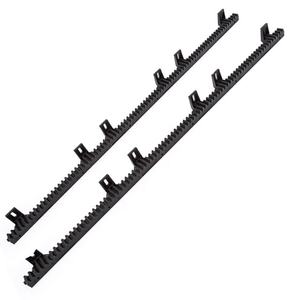The Oliver 88 tractor, a significant workhorse of mid-20th century American agriculture, utilized a robust manual transmission and final drive system. Proper lubrication of its gearbox is paramount for longevity, smooth shifting, and efficient power transfer. Selecting the correct lubricant requires understanding the technology of the era and the demands placed on these components. The gearbox in the Oliver 88 is a constant mesh design, utilizing hardened steel spur gears operating under significant pressure and potential shock loads during field work. Bearings support shafts, and synchronizers (in later models or with certain options) facilitate smoother gear engagement. The operating environment is harsh, involving wide temperature variations, potential moisture ingress, and high mechanical stresses. The lubricant must provide effective film strength to prevent metal-to-metal contact, resist being squeezed out under extreme pressure (EP), manage heat, protect against wear and corrosion, and potentially incorporate additives for synchronizer compatibility.
(what kind of oil is used in an oliver 88 gearbox)
During the Oliver 88’s production era (roughly 1948-1954), lubricant technology differed significantly from today. The original factory recommendation was almost certainly a straight-weight mineral oil, such as SAE 90 Gear Oil, or potentially an SAE 140 in hotter climates or severe service. These were non-detergent oils. Modern lubricant science and readily available multi-grade oils offer superior performance and protection. The recommended lubricant for the Oliver 88 gearbox today is a multi-grade API GL-4 Gear Oil with a viscosity grade of SAE 80W-90 or SAE 85W-140. This recommendation balances historical requirements with contemporary lubricant advantages.
The GL-4 specification is crucial. It denotes a gear oil formulated for moderate extreme pressure (EP) service, typical of manual transmissions and transaxles. GL-4 oils contain EP additives primarily based on sulfur-phosphorus chemistry. Crucially, GL-4 oils are designed to be compatible with yellow metals (brass, bronze, copper) commonly found in synchronizer rings, bushings, and thrust washers within vintage gearboxes. Using a higher EP rated oil, such as API GL-5, is strongly discouraged. GL-5 oils contain significantly higher concentrations of sulfur-based EP additives, which are highly effective for hypoid differentials but are chemically aggressive towards yellow metals. Prolonged use of GL-5 in a transmission designed for GL-4 can lead to corrosion and premature failure of brass synchronizers and bushings.
The viscosity choice, 80W-90 or 85W-140, depends on operating climate and condition. SAE 80W-90 provides excellent all-season performance for most temperate regions, offering easier cold-weather shifting and sufficient protection at operating temperatures. SAE 85W-140 offers enhanced film strength and resistance to thinning at high temperatures, making it suitable for very hot climates, heavy continuous loading, or gearboxes exhibiting some wear (slight gear whine). Both viscosities meet the multi-grade requirement, ensuring adequate flow for lubrication during cold starts while maintaining viscosity under heat. Avoid modern engine oils (like 15W-40) or universal tractor transmission fluids (UTTO) unless explicitly stated as suitable for older gearboxes; they lack the necessary extreme pressure additives and high film strength required for gear teeth. While modern synthetic GL-4 gear oils offer potential advantages in terms of reduced friction, wider temperature performance, and extended drain intervals, a high-quality mineral-based GL-4 oil remains a perfectly adequate and cost-effective choice for the Oliver 88. Always prioritize the GL-4 specification over synthetic vs. mineral considerations.
(what kind of oil is used in an oliver 88 gearbox)
Before filling, ensure the gearbox is clean and free of significant metal debris or sludge. Consult the operator’s manual for the correct fill level and procedure, typically involving a level plug on the side of the transmission case. Use the fill plug, not the level plug, for adding oil. Using the correct GL-4 gear oil in the appropriate viscosity is a fundamental maintenance step to ensure the Oliver 88’s transmission continues to perform reliably for decades to come, preserving both its functionality and historical value. Regular checks of the oil level and condition are essential preventative maintenance practices.


